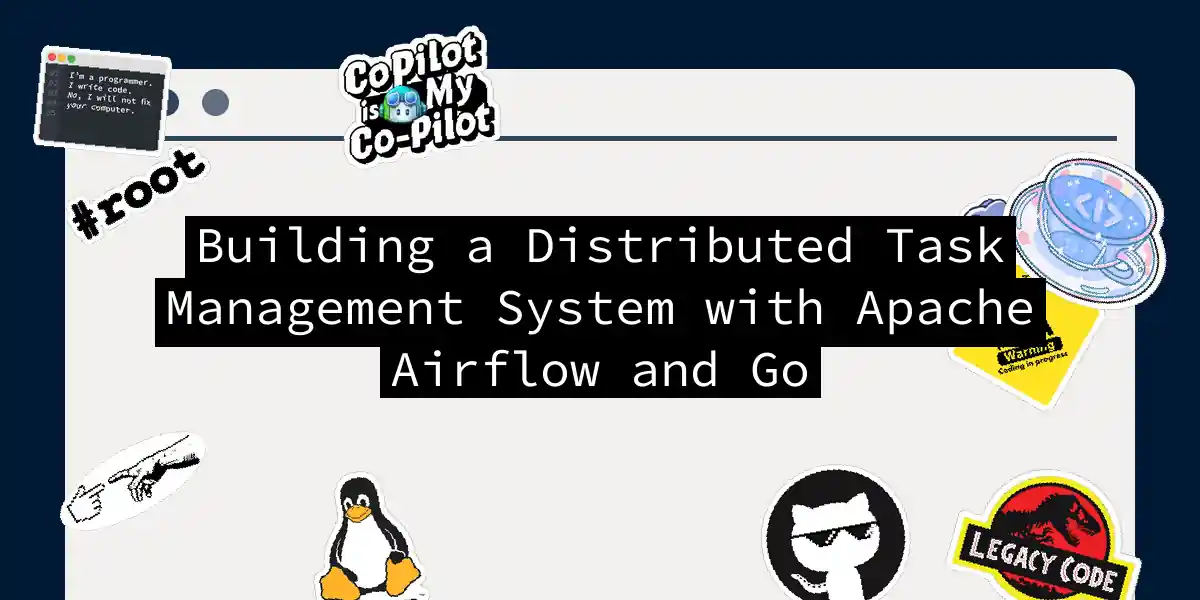Introduction to Apache Airflow
Apache Airflow is a powerful, open-source platform designed to automate and manage workflows, particularly in the context of data processing and machine learning pipelines. It allows developers to define workflows as code, making it easier to manage complex workflows with multiple dependencies and conditions. Airflow’s extensive library of operators and providers enables seamless integration with various services, including cloud providers like AWS and Google Cloud Platform, databases, APIs, and more.
Why Use Apache Airflow?
Before diving into the specifics of using Apache Airflow with Go, let’s understand why Airflow is a top choice for task scheduling:
- Flexibility and Reliability: Airflow is highly flexible and reliable, making it suitable for both development and production environments.
- Python-Based: The entire platform is built on Python, which makes it easy to integrate with other Python-based tools and libraries.
- Scalability: Airflow can start with a simple setup on a single machine and scale up to distributed architectures using Kubernetes or Celery.
- Extensive Integration: Airflow supports a wide range of integrations, from cloud storage to databases and APIs.
Setting Up Apache Airflow
To get started with Apache Airflow, you need to set up the environment. Here’s a step-by-step guide:
Installing Airflow
You can install Airflow using pip:
pip install apache-airflow
Initializing the Airflow Database
After installation, you need to initialize the Airflow database:
airflow db init
Starting the Airflow Services
To start using Airflow, you need to start the web server and the scheduler:
airflow webserver -p 8080
airflow scheduler
Defining Workflows with DAGs
In Airflow, workflows are defined using Directed Acyclic Graphs (DAGs). Here’s an example of a simple DAG written in Python:
from datetime import datetime, timedelta
from airflow import DAG
from airflow.operators.bash import BashOperator
default_args = {
'owner': 'airflow',
'depends_on_past': False,
'email_on_failure': False,
'email_on_retry': False,
'retries': 1,
'retry_delay': timedelta(minutes=5),
}
with DAG(
'example_dag',
default_args=default_args,
description='A simple DAG',
schedule_interval=timedelta(days=1),
start_date=datetime(2023, 10, 30),
catchup=False,
) as dag:
task1 = BashOperator(
task_id='print_hello',
bash_command='echo "Hello World!"'
)
task2 = BashOperator(
task_id='print_hello_again',
bash_command='echo "Hello World again!"'
)
task1 >> task2
This DAG defines two tasks that run sequentially.
Integrating Go with Apache Airflow
While Airflow is primarily built on Python, you can integrate Go code into your workflows using several approaches:
Using BashOperator to Run Go Scripts
One of the simplest ways to run Go code within an Airflow DAG is to use the BashOperator to execute a Go script.
Here’s an example:
from datetime import datetime, timedelta
from airflow import DAG
from airflow.operators.bash import BashOperator
default_args = {
'owner': 'airflow',
'depends_on_past': False,
'email_on_failure': False,
'email_on_retry': False,
'retries': 1,
'retry_delay': timedelta(minutes=5),
}
with DAG(
'go_integration_dag',
default_args=default_args,
description='A DAG that integrates Go',
schedule_interval=timedelta(days=1),
start_date=datetime(2023, 10, 30),
catchup=False,
) as dag:
task = BashOperator(
task_id='run_go_script',
bash_command='go run /path/to/your/go/script.go'
)
Using Custom Operators
For more complex integrations, you can create custom operators in Python that interact with your Go code. Here’s an example of how you might create a custom operator:
from airflow.operators.python import PythonOperator
import subprocess
def run_go_script(**kwargs):
subprocess.run(['go', 'run', '/path/to/your/go/script.go'])
with DAG(
'custom_go_integration_dag',
default_args=default_args,
description='A DAG with a custom Go operator',
schedule_interval=timedelta(days=1),
start_date=datetime(2023, 10, 30),
catchup=False,
) as dag:
task = PythonOperator(
task_id='run_go_script',
python_callable=run_go_script
)
Monitoring and Managing Workflows
Airflow provides a robust web interface for monitoring and managing your workflows. Here’s a brief overview of what you can do:
- View DAGs: You can see all your DAGs, their last run dates, the number of runs, and their statuses.
- View Task Logs: For each task, you can view the logs to see the output and any errors.
- Trigger DAGs: You can manually trigger DAGs from the web interface.
- Pause and Unpause DAGs: You can pause or unpause DAGs to control their execution.
Here is a simple diagram showing the workflow of a DAG in Airflow:
Conclusion
Apache Airflow is a powerful tool for managing distributed tasks, and integrating it with Go code can enhance your workflow automation capabilities. By using custom operators or the BashOperator, you can seamlessly run Go scripts within your Airflow DAGs. This approach not only leverages the strengths of both languages but also provides a scalable and reliable solution for complex task scheduling needs.
Remember, the key to mastering Airflow is to understand its components, such as the web server, scheduler, and workers, and how they interact to execute your DAGs. With practice and the right integration strategies, you can build robust and efficient task management systems that meet your specific requirements.
